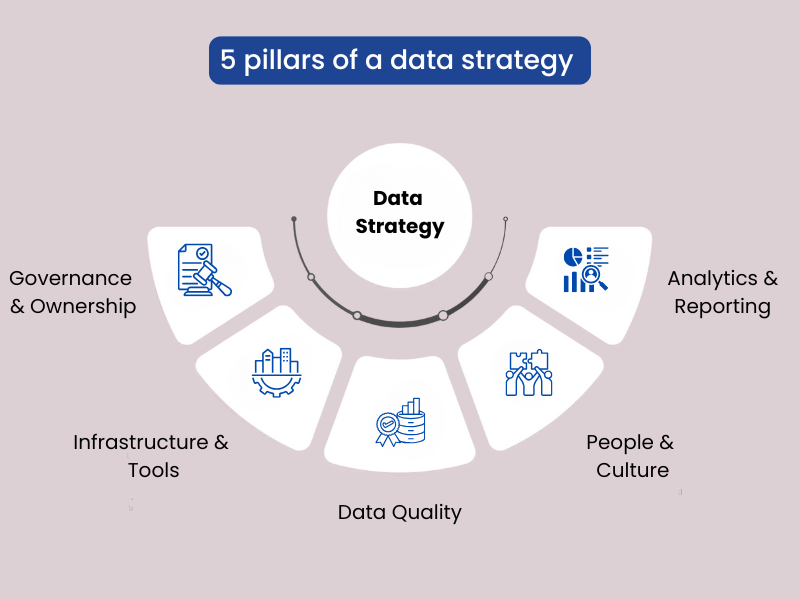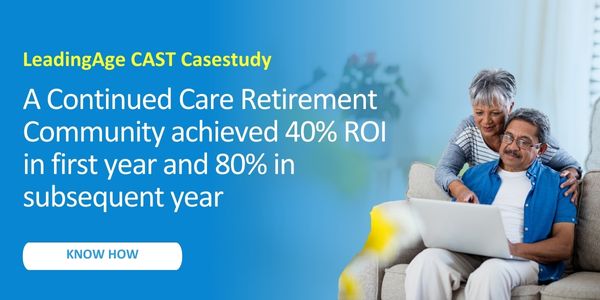How to Assess Your Data Strategy Maturity: Executive Guide + Interactive Tool
Executive Summary
We created this tool after hearing the same question from every senior care leader we work with: where do we begin?
In today’s senior care landscape, data is no longer just an IT concern, but imperative for leadership to make informed decisions. From fall risk prediction to optimized staffing, the ability to use data smartly determines whether your community simply runs or thrives!
Ask yourself a question: Where does your organization stand on its data maturity journey?
This guide gives you a clear answer, along with a self-assessment tool, best-practice frameworks, and answers to common questions healthcare leaders ask.
What is a Data Maturity Assessment approach?
Data Maturity Assessment helps you understand how well your organization collects, manages, analyzes, and acts on data.
It’s not just about software or dashboards. It determines how the data flows through your operations and whether it’s driving real decisions. For senior care communities, this means evaluating whether your data practices support better resident outcomes, regulatory compliance, and efficient staffing.
A strong assessment approach:
- Looks at people, processes, and technology together
- Scores maturity across multiple dimensions
- Benchmarks your progress
- Recommends strategic next steps
What are the 5 pillars of a data strategy?
A truly effective data strategy in senior living is built on these 5 pillars:
- Governance & Ownership – Who’s responsible for your data? Are policies in place?
- Infrastructure & Tools – Are your systems unified? Can they talk to each other?
- Data Quality – How clean, consistent, and accessible is your data?
- Analytics & Reporting – Are you stuck in spreadsheets, or using predictive dashboards?
- People & Culture – Do your teams trust and use data in day-to-day decisions
Each pillar plays a role in improving care, optimizing operations, and preparing innovation like AI and automation.

What are the KPIs for Data Maturity?
You cannot manage what you cannot measure! Here are common KPIs to track data maturity:
- Percent (%) of automated reports vs. manual
- Dashboard usage across departments
- Data accuracy/error rate
- Predictive analytics adoption
- Time to insight (from data collection to decision)
- Number of data-trained decision-makers
Who should take this assessment?
This assessment is designed for senior care leaders who:
- Are responsible for operations, strategy, or digital transformation
- Struggle with siloed data, manual reporting, or inconsistent analytics
- Want to understand how to use existing systems more effectively
- Are considering AI, predictive tools, or workflow automation but don’t know where to begin
Whether you’re a CEO, COO, CIO, Director of Nursing or Innovation Lead, if your decisions depend on data, this quiz is for you.
How to assess your data strategy maturity (Free Tool)
Want to know where your organization stands and what to do next? Use our free interactive tool.
Take the 2-Minute Assessment Quiz
What you’ll get:
- Your current maturity stage (Ad Hoc to Strategic)
- Personalized recommendations via email
- A way to roadmap that improves your data strategy across 5 key areas
No jargon. No spreadsheets. Just clarity.
Want a deeper dive into the 4 levels of data maturity in senior living?
Explore NuAIg’s Data Maturity Model
Let’s get honest for a second: most communities think they’re more data-mature than they are. This quiz helps cut through that fog.
Real-Life Examples: Low Maturity Example: The Spreadsheet Spiral
A mid-sized assisted living facility was managing all occupancy, staffing, and clinical data through Excel files. Reports took days to compile, and decisions were often reactive. After a flu outbreak led to emergency staffing issues, leadership realized their system couldn’t scale.
High Maturity Example: The Predictive Community
A progressive memory care facility implemented a centralized data platform with real-time dashboards. Staffing models adjusted dynamically based on acuity levels, and fall risks were flagged in advance. The result- improved care outcomes, reduced overtime, and fewer hospital readmissions.
Related Insights
Are you already building dashboards and exploring data visualization?
Check out our blog on Talking Dashboards That Predict Falls and see how GenAI is transforming healthcare decision-making.
Common Questions About Data Strategy and Maturity (FAQ)
What are the stages of the data maturity model?
Senior living orgs typically move through 4 stages: Ad Hoc, Organized, Integrated, and Strategic. Learn more here (Datamaturityblog link)
What is Gartner’s data maturity model?
Gartner’s model outlines five stages: Unaware, Aware, Reactive, Proactive, and Optimized. It is generic vis-à-vis industry-specific models, such as NuAIg’s.
What are the four steps in an optimal data strategy?
The 4 steps include data consolidation, self-service BI, predictive analytics, and AI-driven automation.
What are the risks of not having a data strategy?
- Staff burnout from inefficiencies
- Poor resident outcomes due to reactive care
- High operational costs
- Compliance issues
How does this quiz differ from a traditional audit?
Traditional audits are resource-heavy and time-consuming. This quiz is quick, strategic, and gives you personalized insights instantly.
Final Thought
Data maturity isn’t just about having more tools but to discover how you can use your existing technology stack in a smarter manner.
We recommend that you take this data maturity assessment to discover your current state and plan how to grow to the next level.





